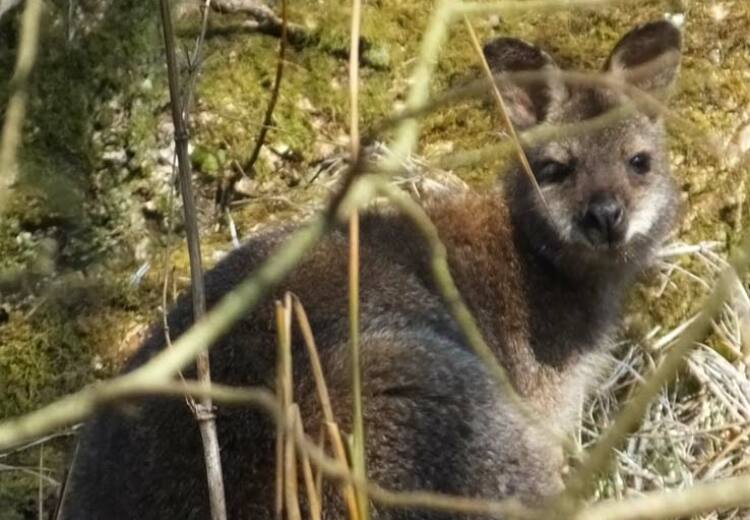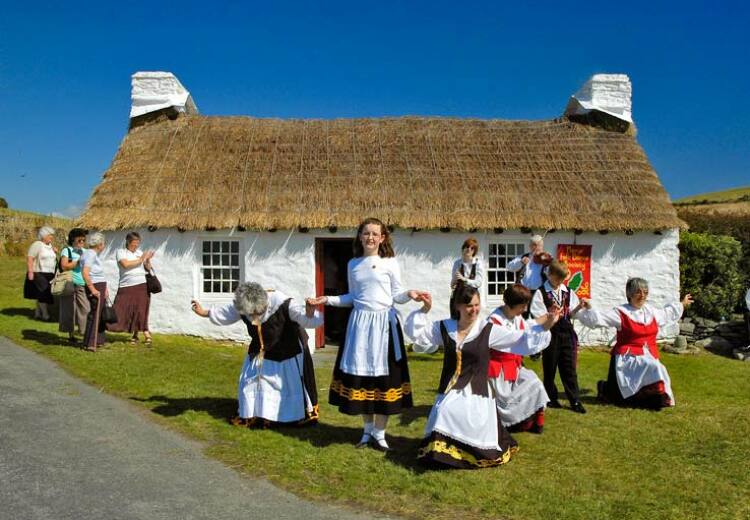Nick Pinder retired on 1 November after almost a quarter of a century as General Manager of the Curraghs Wildlife Park, Ballaugh.
During his tenure Nick served under three departments, 13 politicians and nine different Ministers. He saw the 40 acre wetland park receive international recognition and become involved in international breeding programmes.
Nick said: ‘When I arrived in May 1987 I was only the second manager, following the death of Tom Kind who had run it since it was created in 1965. There have been many developments since then but bringing the park into the international zoo community in the early 1990s was a significant one.’
The park remains a member of both the British and Irish Association of Zoos and Aquaria (BIAZA) and the European equivalent, EAZA. It has also been recognised as part of an internationally important wetland habitat, the Ballaugh Curragh Ramsar site.
‘The fundamental thing is making explicit to visitors the link between the Curraghs’ ASSI Ramsar designation and the collection of animals within the park,’ Nick went on. ‘We specialise in wetland species from around the world for our visitors to experience and learn from and it is wonderful reading their comments in the Visitors' Book to realise that many of them do appreciate what we're doing.’
The low point for Nick was seeing the park closed to visitors in 2001 during the foot and mouth disease restrictions and in 2002 when all the red deer and lechwe antelope had to be destroyed after contracting TB from an untraced source.
‘We are only now replacing the deer with the arrival of a female elk from the Highland Wildlife Park to be introduced shortly,’ Nick went on. ‘A male will follow from Whipsnade Zoo next year to build on our wetland wildlife theme.’
Investment in recent years has seen the addition of the meerkat enclosure and the indoor and outdoor play areas. Nick doesn't really have any favourite animals as they are all his charges but he is proud of many of the exhibits.
‘The whole walk-through experience is still unusual in British animal collections,’ Nick explained. ‘The enclosures are a bit different and with exhibits like the Life on Islands we are explaining crucial facts about biodiversity, including why so much of it is rare. Overall, I think the Wildlife Park is a vital asset for the Isle of Man. At international level it helps the Manx Government meet its international obligations in wildlife conservation and it provides a terrific resource for young families who otherwise would have no opportunity of becoming acquainted with wildlife short of going on expensive trips off island.’
Nick paid tribute to the work undertaken by all the Park’s staff including the Education Officer, Liz Brunswick, who each year teaches 3,000 pupils about wildlife. She is an important addition to the tight team of staff that maintain the park under Nick’s direction, comprising six keepers, a head keeper, two duty managers, one office assistant and three receptionists who job share.
Nick, who grew up in Shropshire, received a BSc honours degree in environmental sciences from the University of East Anglia, followed by a Masters degree in nature conservation from University College, London. He regularly worked as a zookeeper while studying but his first job after qualifying was as warden of the City of Birmingham Museum and Art Gallery’s Nature Centre - effectively a small zoo and nature reserve - prior to taking charge at the Curraghs. In retirement, he is looking forward to spending more time with wife Sue and continuing wildlife conservation with various groups they are involved with, including Manx Birdlife and the Manx Bat Group.
Mike Ball, Director of Leisure at DCCL, said: ‘Everyone in the Department appreciates the sterling efforts Nick has made over the years. For Nick this was always more than a job – it was a way of life. All of his colleagues past and present wish Nick and his wife Sue a long, happy and healthy retirement.’
The Curraghs Wildlife Park came into being under the Board of Agriculture and Fisheries in 1965, then under the control of the Department of Agriculture, Fisheries and Forestry from 1987. It was brought under the Department of Tourism, Leisure and Transport in 1994, later the Department of Tourism and Leisure, and under the DCCL in April 2010, following the government restructure.
ENDS
Wednesday 2nd, November 2011 02:56pm.







